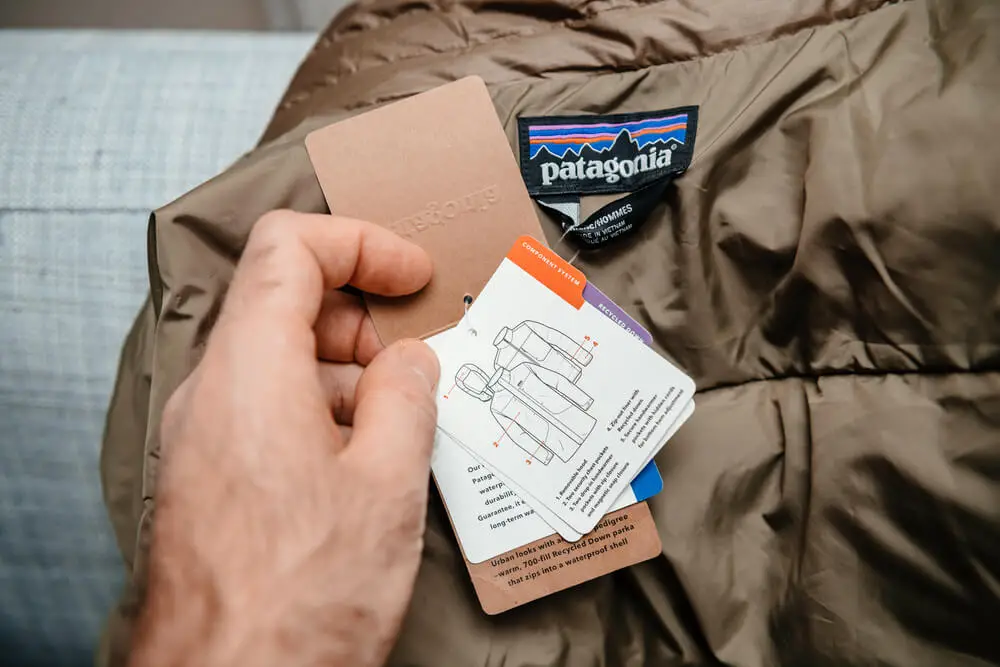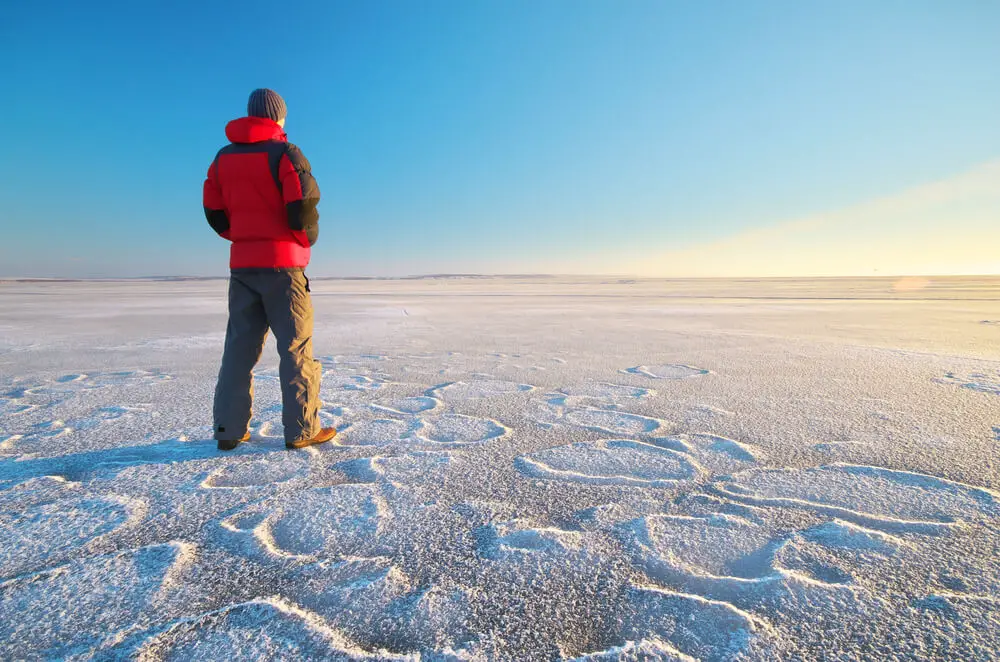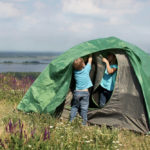If you are still wondering if Patagonia jackets are warm, I will tell you that they sure are. Patagonia is an amazing brand that has been going strong for years. The reason for their long-term success is partly due to their amazing designs made with sustainably sourced and recycled materials.
But these are only some things that make the brand a great one. If you go to Patagonia’s website, you will find a wide range of products for all kinds of weather and outdoor activities. They have many amazing jackets that you can choose from, most of which can do a great job at keeping you warm.
If you want to learn more about Patagonia’s jackets, you should stick around for the rest of this guide. You will learn a lot of valuable information about the jackets. Still, you can also find out the temperature ratings of the top models the company offers. You do not want to miss that!
More...

Table of Contents
Does The Patagonia Jacket Keep You Warm?
Most Patagonia jackets do a great job at keeping people warm. Even though most jackets from this brand perform better in milder weather, you can also wear them in the coldest weather.
If you feel cold in a Patagonia jacket, you should not attribute that to the actual jacket right away. You should remember that several factors can influence how warm or cold you feel when wearing a jacket. Whether your jacket performs well or not can depend on factors like these:
Body acclimation
Even the jackets with the highest quality can sometimes perform poorly. The first thing that will affect this performance is your body and the temperature it is used to.
For example, people living in places with warmer climates will not be able to adjust to colder weather that easily. Even with the best jacket, you might feel cold before your body acclimates to the current weather temperatures.
Clothing
Another thing to keep in mind is the things you are wearing under your jacket. Sometimes, an extra layer of clothes can make all the difference. When you combine a bodysuit with insulation of the highest quality, you will find that you will feel much warmer in the jacket.
Food
What you eat will also affect your ability to cope with the extreme cold. Some foods work like fuel for your body and help you stay warm in regular or very cold weather. I recommend that you eat fatty foods or foods that take longer to digest.
Weather
The different jackets from Patagonia can also perform differently in different weather. Are you hiking in late fall or the middle of winter? Are there dark clouds in the sky, or are you exposed to the sun’s rays? Is there a mild wind, a strong wind, or no wind?
All these things will affect how warm or cold you feel in your jacket when you think of it.
Try to dress according to the weather you will be going out in. It is always smart to wear a windproof and waterproof jacket, no matter the weather. That kind of jacket will protect you both from wind and rain if the weather takes a turn for the worse.
If you are going out in sunny weather, take a down jacket or a down sweater. They do not need to be as insulated as the jacket you wear in the extreme cold. Thanks to the sun, you will feel much warmer than usual.
What Temperature Is The Patagonia Jacket Good For?
The Patagonia jackets are suitable for all kinds of temperatures. In the final section of this guide, you can find detailed information on the temperature ratings of some of the best Patagonia jackets. The temperature ratings range from -20 degrees Celsius to +20 degrees Celsius.
So, you can find jackets from this brand that are suitable for all kinds of temperatures. When choosing a jacket, you need to pay attention to the materials used in the making and the type of insulation. If you are looking for a jacket suitable for cold weather, good insulation should be your top priority.
For both men's and women’s jackets, Patagonia uses three types of insulation. There is the down insulation that performs best in cold and dry weather. You can choose between jackets with 600 fill power, 700 fill power, or 800 fill power.
The second best option is the active insulation, a great choice for dynamic activities. You need a jacket with breathable insulation. This insulation is best for trail runners, extreme hikers, and people who have a more dynamic in their everyday life.
Finally, you have the third type of insulation – the synthetic. The company has three types of synthetic insulation that you must know. Those are the PrimaLoft Gold, PlumaFill, and the Thermogreen. These set the performance standard among companies of this kind. Still, there is no comparison when it comes to the quality.
I say that there is no comparison because no other company has been able to create quality synthetic insulation that performs as well as these three options. Patagonia has outdone themselves with the warmth to weight ratio. Their warmth-to-weight ratio ensures that you will get the warmth you need with no added weight, and that is very cool.

Which Patagonia Jacket Is Best For Cold Weather?
There are quite a few amazing Patagonia jackets for cold weather that I can mention. Still, there is no one definite answer. Different people will like different jackets and which one you consider as best will depend on your personal preference.
I will give you the names of some of the best Patagonia jackets in the following section. But before I do that, I want to tell you what you need to keep in mind when buying a jacket for cold weather. Here are those things:
3-in-1 jacket (outer shell + mid-layer/fleece jacket)
Lightweight but insulated jacket
Waterproof/Water-resistant outer shell
A breathable, moisture-wicking lining material
A jacket that packs small
A jacket with pockets and two-way zippers
A jacket with a waterproof hood
Patagonia Jackets - Temperature Ratings
From all Patagonia jackets currently available on the company’s website, I have selected the most talked-about models that are best for cold weather. If you are looking for a great jacket to keep you warm, you need to go over these models. Make sure to check out the temperature ratings, as they will tell you which type of jacket fits your needs best:
Patagonia Grade VII Down Parka
Fabric: 100% recycled Pertex Quantum nylon
Insulation: Down fill
Temperature rating: -20 to 0 degrees Celsius
Patagonia Frozen Range Parka
Fabric: 100% recycled Gore-Tex polyester
Insulation: Down fill
Temperature rating: -18 to 0 degrees Celsius
Patagonia DAS Parka
Fabric: 100% Pertex Quantum Pro nylon
Insulation: Synthetic PrimaLoft fill
Temperature rating: -15 to 0 degrees Celsius
Patagonia City Storm Parka
Fabric: 35% recycled H2No Performance nylon
Insulation: Down fill
Temperature rating: -15 to 0 degrees Celsius
Patagonia Macro Puff
Fabric: 100% recycled nylon
Insulation: Synthetic PlumaFill
Temperature rating: -13 to 2 degrees Celsius
Patagonia Snowbelle/Snowshot Jacket
Fabric: 100% recycled H2No polyester
Insulation: Synthetic Thermogreen
Temperature rating: -13 to 1 degrees Celsius
Patagonia Vosque 3-in-1 Parka
Fabric: 65% recycled H2No nylon and35% polyester weave
Insulation: Synthetic Thermolite
Temperature rating: -10 to 4 degrees Celsius
Patagonia Baby Hi-Loft Down Sweater Hoody
Fabric: 100% recycled Pertex polyester
Insulation: Down fill
Temperature rating: -8 to 5 degrees Celsius
Patagonia Tough Puff Hoody
Fabric: 46% recycled polyester
Insulation: Synthetic FullRange polyester
Temperature rating: -6 to 12 degrees Celsius
Patagonia Hi-Loft Down Hoody (Only for men)
Fabric: 100% recycled polyester
Insulation: Down fill
Temperature rating: -5 to 9 degrees Celsius
Patagonia Silent Down Jacket
Fabric: 70% recycled polyester
Insulation: 100% recycled down fill
Temperature rating: -3 to 10 degrees Celsius
Patagonia Down Sweater Jacket/Hoody
Fabric: 100% recycled polyester
Insulation: Down fill
Temperature rating: -3 to 12 degrees Celsius
Patagonia Nano Puff
Fabric: 100% recycled polyester
Insulation: Synthetic PrimaLoft Gold eco-insulation
Temperature rating: -1 to 10 degrees Celsius
Patagonia Silent Down Shirt Jacket
Fabric: 70% recycled polyester taffeta
Insulation: 100% recycled down fill
Temperature rating: -1 to 12 degrees Celsius
Patagonia Nano-Air
Fabric: 87% recycled polyester
Insulation: Synthetic FullRange
Temperature rating: 0 to 12 degrees Celsius
Patagonia Reversible Down Sweater Hoody
Fabric: 100% recycled polyester
Insulation: 100% recycled down fill
Temperature rating: 0 to 12 degrees Celsius
- Are Merrell Shoes Good? – An Unbiased Review of Merrell Footwear - December 9, 2023
- Where Are Merrell Shoes Made? - December 9, 2023
- Camping in 40-degree Weather: Tips and Tricks - September 25, 2023



![Yoga Mat as Sleeping Pad? [Pros and Cons Included] Yoga Mat as Sleeping Pad? [Pros and Cons Included]](https://grandcircletrails.com/wp-content/uploads/2022/05/Yoga-Mat-as-Sleeping-Pad-150x150.jpg)
![What is the Best Hammock for Side Sleepers? – [Pros & Cons Included] What is the Best Hammock for Side Sleepers? – [Pros & Cons Included]](https://grandcircletrails.com/wp-content/uploads/2022/11/Best-Hammock-for-Side-Sleepers-1-150x150.jpg)

![Are Columbia Jackets Good? [Complete Guide] Are Columbia Jackets Good? [Complete Guide]](https://grandcircletrails.com/wp-content/uploads/2022/03/Are-Columbia-Jackets-Good-1-150x150.jpg)